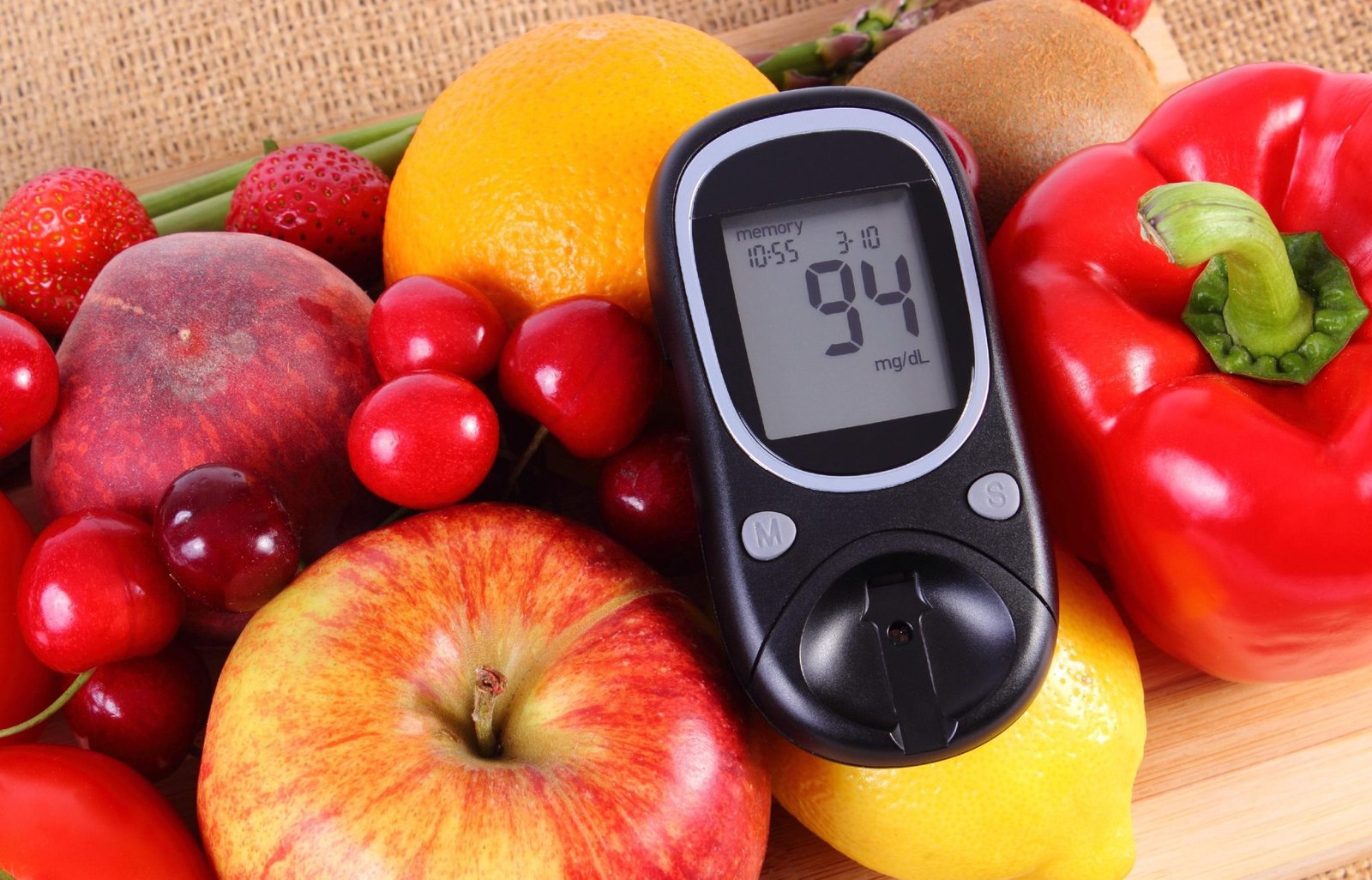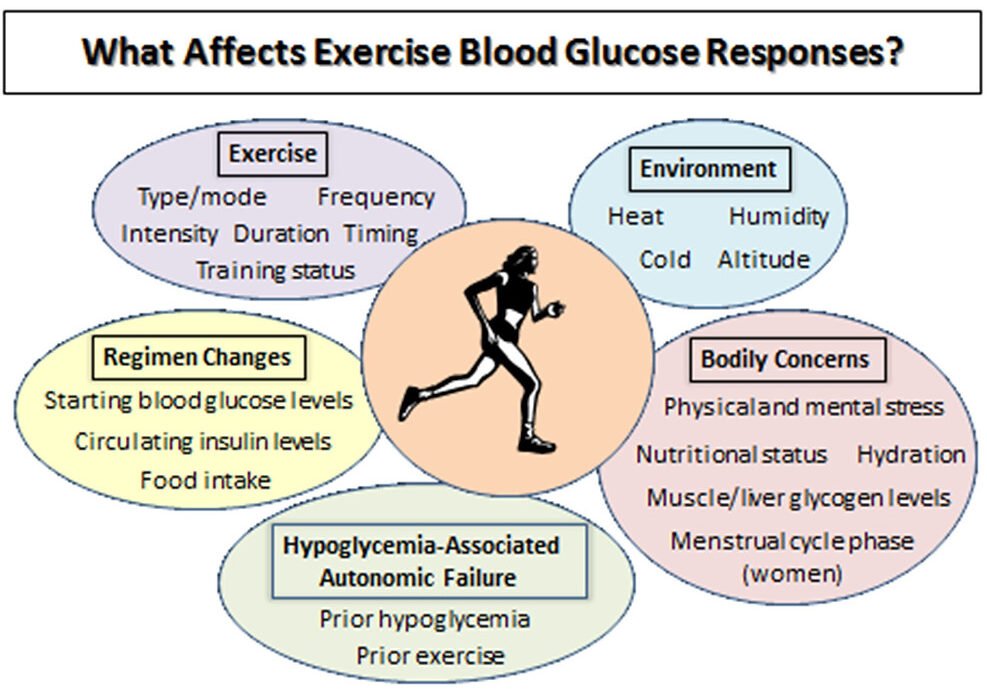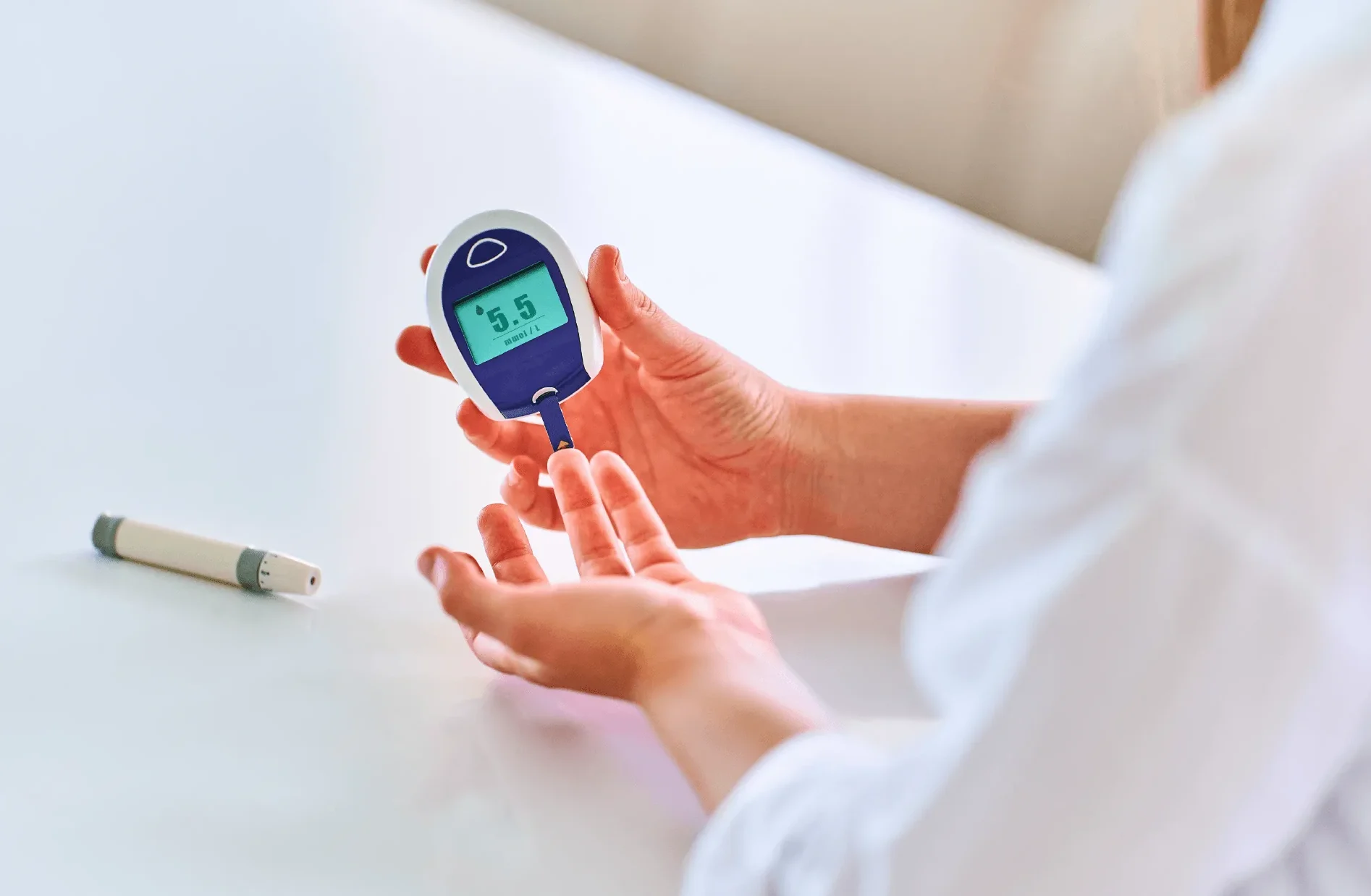Managing blood sugar levels effectively is crucial for maintaining optimal health and preventing serious complications. Whether you’re dealing with diabetes, prediabetes, or simply want to maintain healthy glucose levels, understanding how to control sugar level is essential for your long-term wellbeing. Blood sugar control isn’t just about taking medication—it involves a comprehensive approach that includes dietary modifications, regular exercise, stress management, and consistent monitoring.
Millions of people worldwide struggle with blood sugar management, making this knowledge more important than ever. The good news is that with the right strategies and consistent implementation, you can achieve better glucose control and reduce your risk of complications. This comprehensive guide will walk you through proven methods to help you maintain stable blood sugar levels naturally and effectively.
Understanding Blood Sugar and Its Importance
Blood sugar, or blood glucose, refers to the amount of glucose circulating in your bloodstream. Your body uses glucose as its primary source of energy, but maintaining the right balance is crucial. When blood sugar levels become too high (hyperglycemia) or too low (hypoglycemia), it can lead to serious health complications.
Normal blood sugar levels typically range from 70-99 mg/dL when fasting and less than 140 mg/dL two hours after eating. However, these ranges can vary based on individual circumstances, age, and health conditions. Understanding these baseline numbers helps you recognize when your levels need attention.
The body naturally regulates blood sugar through insulin, a hormone produced by the pancreas. When this system doesn’t work properly, as in diabetes, external intervention becomes necessary to maintain healthy glucose levels.
How To Control Sugar Level Through Diet

Choose Low Glycemic Index Foods
One of the most effective ways to manage blood sugar is by selecting foods with a low glycemic index (GI). These foods are digested slowly, causing a gradual rise in blood glucose rather than sharp spikes. Low GI foods include whole grains, legumes, non-starchy vegetables, and most fruits.
Incorporate foods like oats, quinoa, brown rice, lentils, and sweet potatoes into your daily meals. These complex carbohydrates provide sustained energy while helping maintain stable blood sugar levels throughout the day.
Practice Portion Control
Managing portion sizes is crucial for blood sugar control. Even healthy foods can cause glucose spikes when consumed in large quantities. Use measuring cups, food scales, or visual cues like using your palm to measure protein portions and your cupped hand for carbohydrates.
The plate method is an excellent tool for portion control: fill half your plate with non-starchy vegetables, one-quarter with lean protein, and one-quarter with complex carbohydrates. This approach naturally balances your meals while supporting stable glucose levels.
Time Your Meals Strategically
Eating regular, well-spaced meals helps prevent dramatic blood sugar fluctuations. Aim for three balanced meals and two small snacks daily, spacing them approximately 3-4 hours apart. This consistency helps your body predict and manage glucose levels more effectively.
Avoid skipping meals, as this can lead to dangerous drops in blood sugar followed by overconsumption and subsequent spikes. Consistent meal timing also helps optimize insulin sensitivity and medication effectiveness if you’re taking diabetes medications.
How To Control Sugar Level Through Diet
Low Glycemic Index Foods
| Food Category | Best Choices | Glycemic Index | Benefits for Blood Sugar |
|---|---|---|---|
| Grains | Oats, quinoa, brown rice, barley | 30-55 | Slow glucose release, sustained energy |
| Legumes | Lentils, chickpeas, black beans | 25-35 | High fiber, protein-rich, stable glucose |
| Vegetables | Broccoli, spinach, cauliflower | 10-25 | Low carbs, high nutrients, minimal impact |
| Fruits | Berries, apples, pears | 25-40 | Natural sugars with fiber buffer |
| Proteins | Fish, chicken, tofu, eggs | 0-15 | No glucose impact, helps stabilize levels |
Natural Methods for Blood Sugar Management
Increase Fiber Intake
Dietary fiber, particularly soluble fiber, plays a crucial role in blood sugar control. Fiber slows down carbohydrate absorption, preventing rapid glucose spikes after meals. Aim for at least 25-35 grams of fiber daily from sources like vegetables, fruits, whole grains, and legumes.
Soluble fiber forms a gel-like substance in your digestive tract, which slows nutrient absorption and helps regulate blood sugar levels. Excellent sources include oats, barley, beans, apples, and citrus fruits.
Stay Properly Hydrated
Dehydration can lead to elevated blood sugar levels because your body produces stress hormones that raise glucose. Aim for at least 8-10 glasses of water daily, and increase this amount during hot weather or physical activity.
Water helps your kidneys flush out excess glucose through urine and supports overall metabolic function. Replace sugary beverages with water, herbal teas, or sugar-free alternatives to avoid unnecessary glucose spikes.
Incorporate Beneficial Spices and Herbs
Certain spices and herbs have natural blood sugar-lowering properties. Cinnamon has been shown to improve insulin sensitivity and lower fasting glucose levels. Add half a teaspoon to your morning oatmeal or coffee.
Other beneficial options include turmeric, ginger, garlic, and fenugreek. These can be easily incorporated into cooking or taken as supplements after consulting with your healthcare provider.
Exercise and Physical Activity Guidelines

Aerobic Exercise Benefits
Regular aerobic exercise is one of the most effective ways to improve blood sugar control. Activities like brisk walking, swimming, cycling, or dancing help your muscles use glucose for energy, naturally lowering blood sugar levels.
Aim for at least 150 minutes of moderate-intensity aerobic exercise weekly, spread across multiple days. Even a 10-15 minute walk after meals can significantly reduce post-meal glucose spikes.
Strength Training Importance
Resistance training builds muscle mass, which increases your body’s ability to store and use glucose efficiently. Include strength training exercises at least twice weekly, targeting all major muscle groups.
You don’t need expensive equipment—bodyweight exercises like squats, push-ups, and lunges are highly effective. As muscle mass increases, your body becomes more efficient at glucose utilization, improving overall blood sugar control.
Post-Meal Activity
Light physical activity after meals can dramatically improve blood sugar response. A 10-20 minute walk after eating helps muscles absorb glucose from the bloodstream, preventing post-meal spikes.
This simple habit can reduce post-meal glucose increases by 20-30%, making it one of the easiest and most effective strategies for immediate blood sugar improvement.
Portion Control Guidelines
| Food Group | Portion Size | Visual Guide | Blood Sugar Impact |
|---|---|---|---|
| Carbohydrates | 1/4 of plate | Size of cupped hand | Moderate impact when controlled |
| Proteins | 1/4 of plate | Size of palm | Minimal glucose impact |
| Non-starchy Vegetables | 1/2 of plate | Fill remaining space | Very low impact |
| Healthy Fats | 1-2 tablespoons | Size of thumb | No direct glucose impact |
Stress Management and Sleep Quality
Impact of Stress on Blood Sugar
Chronic stress triggers the release of hormones like cortisol and adrenaline, which raise blood glucose levels. Learning to manage stress effectively is crucial for maintaining stable blood sugar.
Practice stress-reduction techniques such as deep breathing exercises, meditation, yoga, or progressive muscle relaxation. Even 10-15 minutes of daily stress management can significantly impact your glucose control.
Sleep Quality Matters
Poor sleep quality and insufficient sleep duration can impair glucose metabolism and insulin sensitivity. Adults should aim for 7-9 hours of quality sleep nightly to support optimal blood sugar control.
Establish a consistent sleep schedule, create a relaxing bedtime routine, and optimize your sleep environment by keeping it cool, dark, and quiet. Avoid caffeine and electronic devices close to bedtime.
Blood Sugar Monitoring Techniques

Regular Testing Schedule
Consistent blood sugar monitoring helps you understand how different foods, activities, and situations affect your glucose levels. Work with your healthcare provider to establish an appropriate testing schedule based on your individual needs.
For people with diabetes, testing may include fasting levels, pre-meal readings, and post-meal checks. Keep a log of your readings along with notes about food intake, exercise, stress levels, and medication timing.
Understanding Your Numbers
Learn to interpret your blood sugar readings and recognize patterns. Understanding when your levels tend to spike or drop helps you make proactive adjustments to your management plan.
Share your monitoring logs with your healthcare team during regular check-ups. This data provides valuable insights for optimizing your treatment plan and making necessary adjustments.
Medication Management and Healthcare Support
Working with Healthcare Professionals
Regular consultation with healthcare providers is essential for optimal blood sugar management. This team may include your primary care physician, endocrinologist, certified diabetes educator, and registered dietitian.
Schedule regular check-ups to monitor your progress, adjust medications if needed, and address any concerns. Be honest about challenges you’re facing and ask questions about any aspect of your management plan.
Medication Adherence
If prescribed diabetes medications, take them exactly as directed by your healthcare provider. Consistency in timing and dosage is crucial for maintaining stable blood sugar levels.
Never adjust or discontinue medications without medical supervision, even if you’re achieving good glucose control through lifestyle modifications. Your healthcare provider will guide you through any necessary changes safely.
Exercise Guidelines for Blood Sugar Control
Aerobic Exercise Plan
| Activity Type | Duration | Frequency | Intensity | Blood Sugar Benefits |
|---|---|---|---|---|
| Brisk Walking | 30-45 minutes | 5 days/week | Moderate | Immediate glucose uptake |
| Swimming | 30-40 minutes | 3-4 days/week | Moderate | Full-body glucose utilization |
| Cycling | 30-60 minutes | 3-5 days/week | Moderate | Lower-impact glucose control |
| Dancing | 30-45 minutes | 2-3 days/week | Moderate | Fun, sustainable activity |
Long-term Lifestyle Strategies
Building Sustainable Habits
Success in blood sugar management comes from developing sustainable, long-term habits rather than relying on short-term fixes. Start with small, manageable changes and gradually build upon them.
Focus on creating a lifestyle that you can maintain indefinitely. This might mean finding physical activities you enjoy, preparing healthy meals in advance, or establishing consistent daily routines that support your health goals.
Creating Support Systems
Surround yourself with supportive family members, friends, or support groups who understand your health goals. Having encouragement and accountability can significantly improve your success in managing blood sugar levels.
Consider joining diabetes support groups, either in person or online, where you can share experiences, learn from others, and receive motivation during challenging times.
Read More: Heart Healthy Diet Plan: Foods, Recipes And Real-World Benefits
Advanced Tips for Optimal Control
Meal Timing and Intermittent Fasting
Some people find that strategic meal timing or intermittent fasting approaches help improve blood sugar control. These methods should only be attempted under medical supervision, especially if you’re taking diabetes medications.
Time-restricted eating patterns may help improve insulin sensitivity and glucose metabolism, but individual responses vary significantly. Work with your healthcare provider to determine if these approaches are appropriate for your situation.
Meal Timing Strategy
| Meal | Timing | Composition | Blood Sugar Benefits |
|---|---|---|---|
| Breakfast | Within 1 hour of waking | Protein + complex carbs + fiber | Prevents morning glucose spikes |
| Mid-Morning Snack | 2-3 hours after breakfast | Nuts or Greek yogurt | Maintains steady levels |
| Lunch | 4-5 hours after breakfast | Balanced plate method | Sustains afternoon energy |
| Afternoon Snack | 3-4 hours after lunch | Fruit with protein | Prevents pre-dinner drops |
| Dinner | 3-4 hours before bed | Light, balanced meal | Supports overnight stability |
Supplements and Natural Remedies
Certain supplements may support blood sugar management when used alongside conventional treatments. These include chromium, alpha-lipoic acid, berberine, and magnesium. However, always consult your healthcare provider before adding supplements to your regimen.
Natural remedies should complement, not replace, proven medical treatments and lifestyle modifications. Research the quality and safety of any supplements you’re considering, and purchase from reputable sources.
Conclusion
Learning how to control sugar levels effectively requires a comprehensive approach that combines proper nutrition, regular physical activity, stress management, and consistent monitoring. The strategies outlined in this guide provide a solid foundation for achieving better blood sugar control and maintaining long-term health.
Remember that successful blood sugar management is a journey, not a destination. Start implementing these proven methods gradually, and be patient with yourself as you develop new habits. Small, consistent changes often lead to the most significant and sustainable improvements.
Please take action today by choosing one or two strategies from this guide and incorporating them into your daily routine. Whether it’s taking a post-meal walk, increasing fiber in your diet, or establishing a regular sleep schedule, every positive step contributes to better blood sugar control. Consult with your healthcare provider to develop a personalized plan tailored to your individual needs and health goals.
FAQs
Q: How quickly can I see improvements in my blood sugar levels?
A: With consistent dietary changes and regular exercise, you may notice improvements in blood sugar levels within 2-4 weeks. However, significant long-term improvements typically take 2-3 months of consistent lifestyle modifications.
Q: What foods should I completely avoid to control my sugar levels?
A: While no foods need to be completely eliminated, limit refined sugars, processed foods, sugary beverages, and white bread. Focus on portion control and timing rather than complete elimination of food groups.
Q: Can I reverse prediabetes naturally without medication?
A: Yes, prediabetes can often be reversed through lifestyle modifications including weight loss, regular exercise, and dietary changes. However, work closely with your healthcare provider to monitor your progress and determine if medication is necessary.
Q: How often should I check my blood sugar levels?
A: Testing frequency depends on your individual situation and health condition. People with diabetes may need to test multiple times daily, while those with prediabetes might test less frequently. Consult your healthcare provider for personalized recommendations.
Q: What’s the best time to exercise for blood sugar control?
A: Any time is beneficial, but exercising 1-3 hours after meals can be particularly effective for reducing post-meal glucose spikes. Find a time that fits your schedule and allows for consistency.

